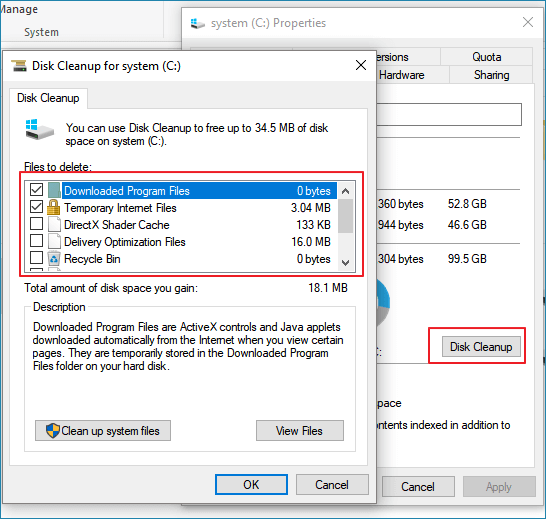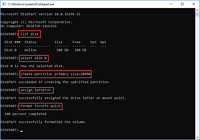C Drive Full, D Drive Empty – How to Fix
Due to its default role as the primary destination for file downloads, the C drive is more susceptible to running out of space. As a result, users may encounter difficulties saving files, installing new applications, or updating existing software because of insufficient space on the C drive. Below is a user case from Reddit:
My C drive is almost full [18.7 GB free out of 212 GB], and my D drive is almost empty [23.2 GB free out of 24.9]. I am assuming this will pose a problem in the near future. Can anyone advise me what to do? Thanks. - from Reddit
Then, what should you do if the C drive is full and the D drive is empty? Do you know what are the main reasons for this issue? Don't worry. Qiling will explain why it happens and provide four efficient solutions to help you fix the C drive full D drive empty problem.
How to Fix When C Drive Full, D Drive Empty - 4 Solutions
When the C drive is full, you cannot install or upgrade software on your computer, which will significantly decline the computer's performance. This section will introduce four safe and solid ways to assist you in solving the "C drive full, D drive empty" issue. Before going through the details of how to do it step-by-step, we can check the basic information table first:
| ⏱️Duration | About 10 Minutes |
| 💻Goal | Clean up or expand the C drive to fix "C drive full, D drive empty." |
| 👩💻Suitable User | For all users: beginners and experienced users |
| 🧰Methods |
Method 1. Clean C Drive
Users can take certain measures to alleviate the space shortage on the C drive. One option is regularly cleaning up unnecessary files, removing unused applications, or moving files to other drives or cloud storage to free up space on the C drive. There are mainly two options that can help you find out what is using up my C drive space and enable you to free up C drive space.
Option 1. Use Qiling Disk Cleaner
When it comes to freeing up hard drive space, Qiling Disk Master stands out as it can provide various disk management tools, including DiskMark, Disk Health, and Clean Genius. Its "Clen Genius" feature allows you to scan and remove the junk files loaded during system and computer operations. After scanning, you can pick the files you want to delete and remove them effectively.
This powerful tool can help users solve the yellow triangle warning on the C drive.
Option 2. Run Disk Clean on C Drive
Beyond Qiling Disk Master, Windows has a Disk Clean tool to check available space and clean junk files on your hard drive. However, it's a bit difficult to apply since it needs to be activated via File Explorer and requires more time and effort. Here is the complete
Step 1. Press "Windows + R" to enter File Explorer on Windows.
Step 2. In the File Explorer interface, click "This PC," right-click on C drive and choose "Properties."
Step 3. Select the files you want to delete from the list and click "OK."

Ensure you don't need this file anymore before deleting it, or you can back up the important data and store it on an external hard drive in advance.
There are four applicable solutions have been mentioned in this article, and you can share this page to help others in need on your social media with a one-click button below:
Method 2. Extend C Drive
The second way you can fix the "C drive is full, and the D drive is empty" problem is to extend the space of the C drive. Qiling Disk Master will also cover you without adjacent unallocated space in this scenario, while the Windows built-in tool Disk Management can only apply for expanding C drive when there is contiguous unallocated space, or you may need to delete other drives to make space, which has the potential of losing data. Now, let's take a closer look at how to expand the C drive with the two utilities.
1. Extend C Drive With or Without Adjacent Unallocated Space via Qiling Disk Master
Qiling Disk Master breaks the Windows limitation, enabling users to successfully extend C drive with or without unallocated space, whether the unallocated space is contiguous or non-adjacent. In addition, it can also resize, move, create, and merge partitions, ensuring optimal disk space utilization without any data loss.
Option 1. Extend System C drive with unallocated space
- 1. Right-click on the System C: drive and select "Resize/Move".
- 2. Drag the system partition end into the unallocated space so to add it to the C: drive.
- 3. Click "Proceed" to execute the operations and extend the C drive.
Option 2. Extend System C drive without unallocated space
- 1. Right-click a big partition with enough free space on the system disk, select "Allocate Space".
- 2. Select the system drive at the Allocate Space From (*) To section, and drag the end of System C drive into the unallocated space.
- 3. Click "Proceed" to save the changes and extend the C drive.
Extra Option. Extend C Drive Using Adjust with 1-click
One of the powerful features of Qiling Disk Master is that it can detect your low-space drive and offer you a one-click adjustment of disk space.
2. Extend C Drive With Adjacent Free Space via Disk Management
If you have adjacent unallocated space, you can try Disk Management. But remember to back up your files just in case because this process can harm them if anything goes wrong. Refer to the steps below to use Disk Management:
Step 1. Hit "Windows+X," and you will see a menu where you can select Disk Management.
Step 2. Right-click C drive in the tool's interface and choose "Extend Volume...".
Step 3. Follow the on-screen instructions to finalize the C drive extending operation.
The solutions mentioned in this section can teach you to extend the C drive using Qiling Disk Master and Disk Management. However, you can also retort to Diskpart in Command Prompt if you are an experienced user:

How to Manage Partitions with Disk Partition CMD in Windows 11/10?
This article will teach you how to use cmd to create, remove, and resize(extend/shrink) partitions with a detailed guide.

Why does C Drive Full, D Drive Empty Happen?
After coping with your problem using the above methods, we can now explore why the "C drive full, D drive empty" issue happens. First, the C drive typically contains Operating System and system files, which take up significant space. Then, if you like to install many programs, applications, and games, your C drive will be filled up quickly as these files are usually saved to the default download location. Another important reason is temporary files, which can accumulate and consume a lot of free space on your C drive. Thus, it's necessary to regularly monitor the storage capacity of your C drive and increase the C drive space.
Conclusion
"C dive full, D drive empty" is a frequent problem for all computer users, affecting the system's and computer's performance. To prevent the inabilities caused by this issue, we introduced four valuable methods to help you clean up or extend the C drive in this article. In summary, Qiling Disk Master can offer you a hand in all kinds of the C drive if full scenarios. Furthermore, it provides four options in this post that can perfectly meet your requirements. Download it and effortlessly fix the "C drive full, D drive empty" problem!
FAQs of C Drive Full, D Drive Empty
You can read and discover the following frequent questions and valuable answers to learn more about C drive full and D drive empty.
1. How to move space from D drive to C drive?
Qiling Disk Master can help you easily move space from D drive to C drive using its "Allocate Space" feature. Follow the quick space below:
Step 1. Right-click on the D drive and choose "Allocate Space" from the menu.
Step 2. Select the target C drive and drag its end rightward to add the free space from the D drive.
Step 3. Click the "Proceed" to allocate free space from the D drive to the C drive.
2. Can I merge C and D drive?
You can combine the C and D drives if they are next to one another in order to increase the C drive's capacity. Merge the C and D drives, then reallocate the disk partitions for both drives if you need to increase the space on the C drive. However, it's important to note that if the D drive contains Windows boot files, you'd better not merge it with other drives.
3. Should I use a D drive instead of a C drive?
It depends on your needs. In theory, the system files can be stored on the C drive, and personal information can be kept on the D drive. Users can improve the physical memory of the Windows system thanks to this differential. Users can save games on the D drive, and depending on practicality, files can be saved on the C or D drives.
Related Articles
- How to Check Total Disk Space in Windows 11 [Best Solutions Here]
- Merge Partitions or Unpartition a USB Drive in Windows 11/10
- BitLocker Partition: How to Partition A BitLocker Drive on Windows 10
- How to Create Qiling Disk Master Bootable USB